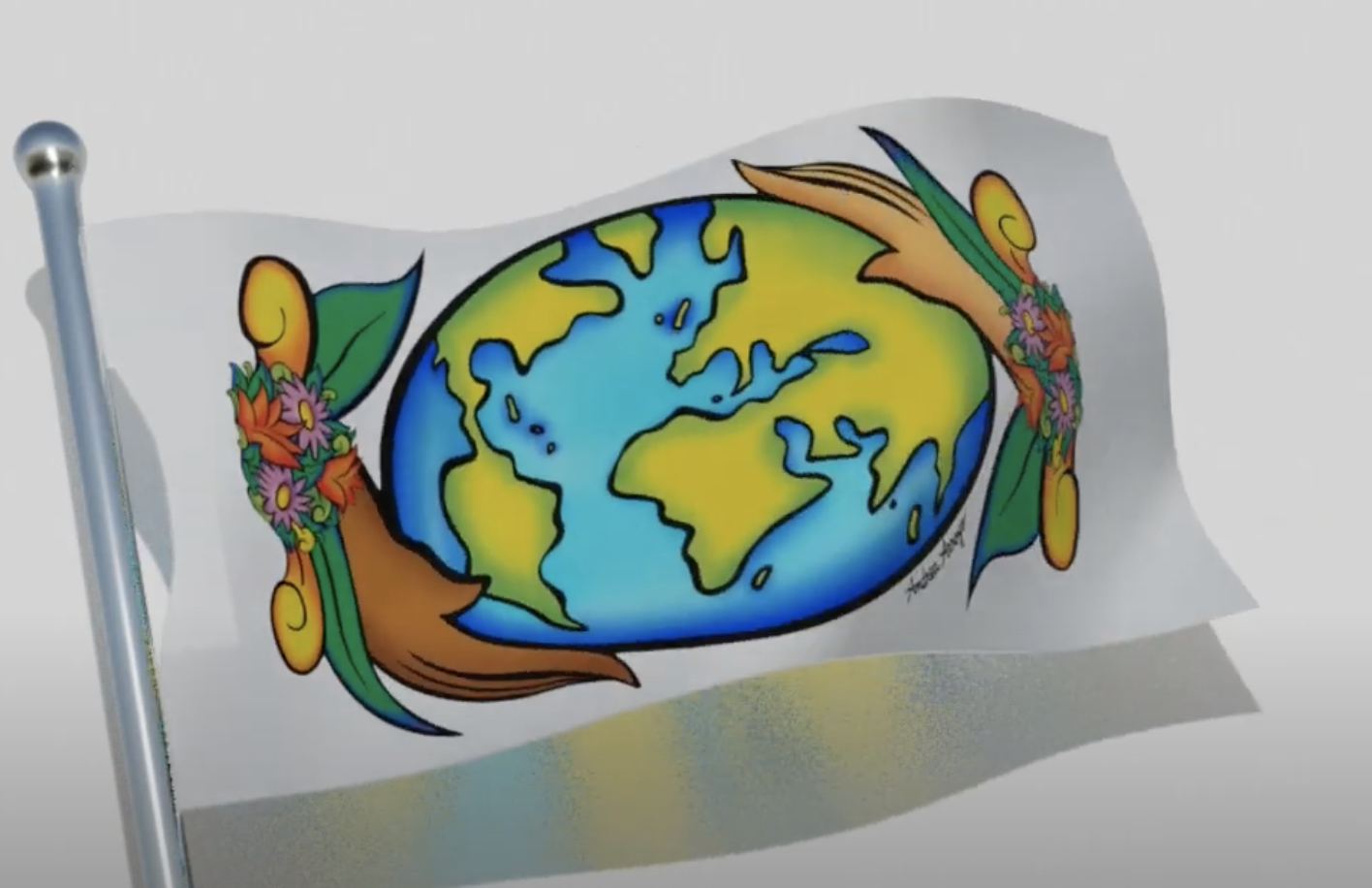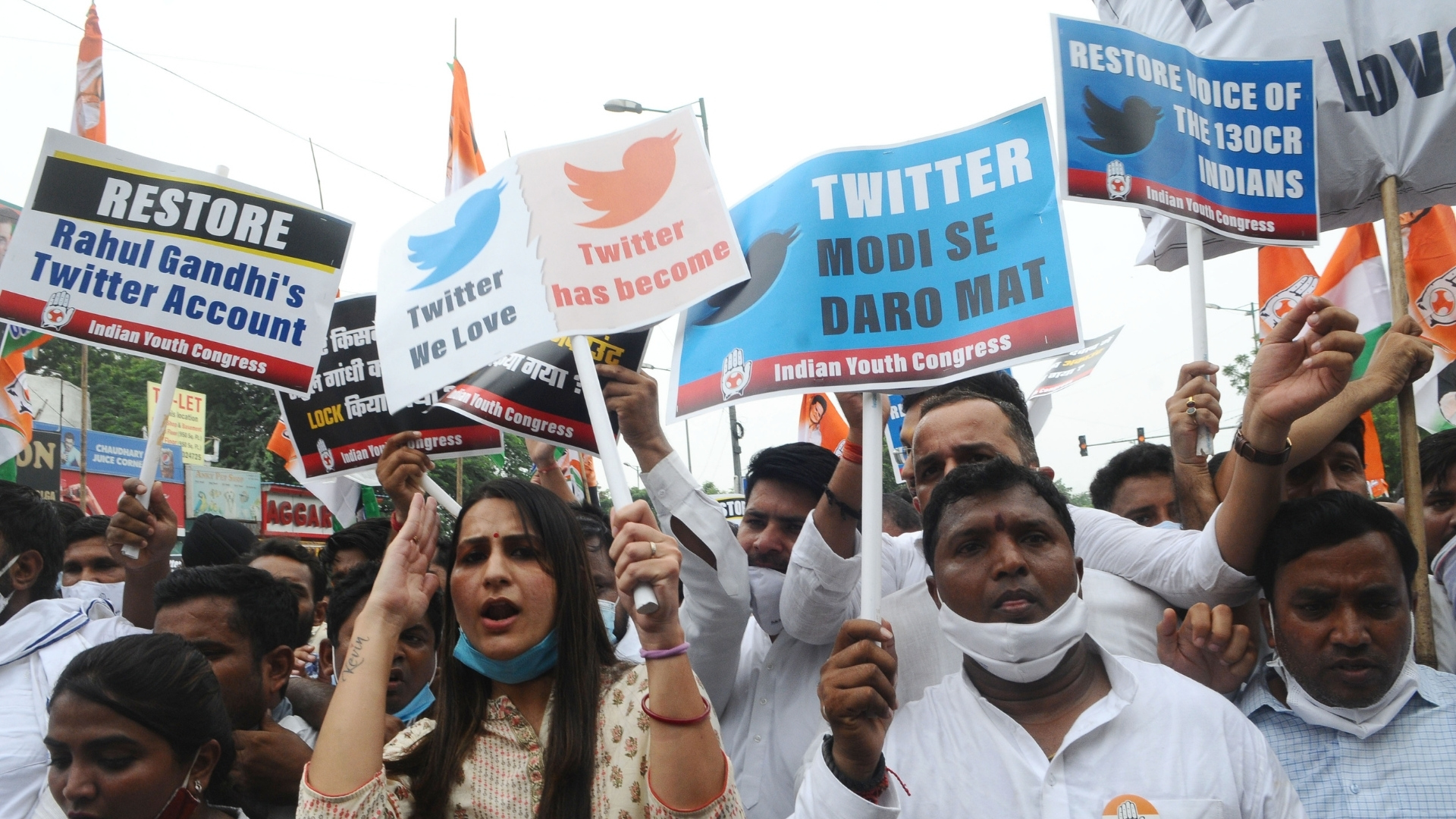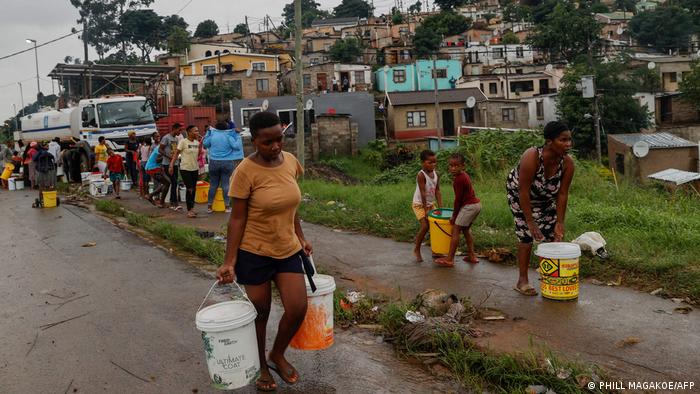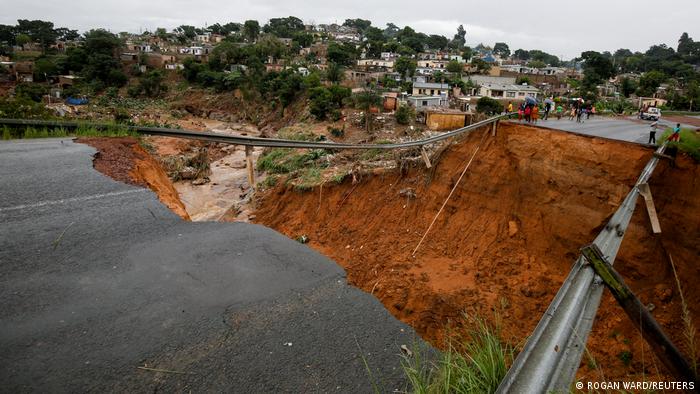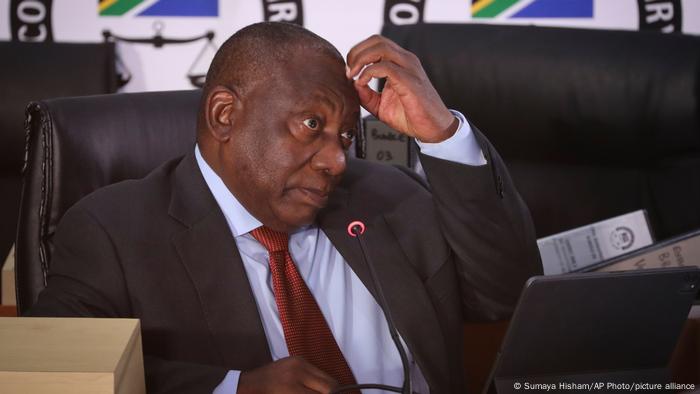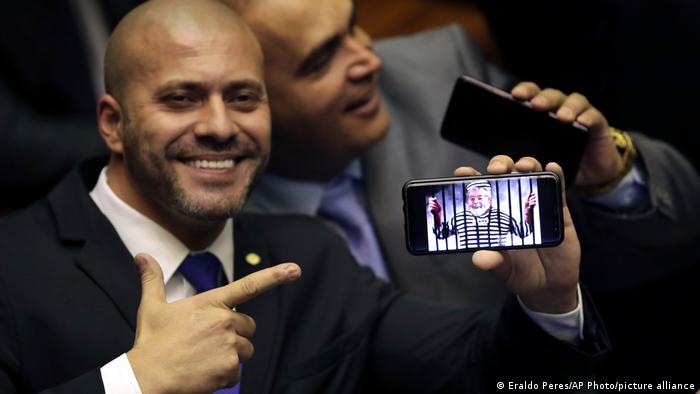Of the Earth

Photograph by NASA
#TheOverview
04.22.2022
WORDS BY WILLOW DEFEBAUGH
The Earth is not a day or a month, it’s something we belong to. Now more than ever, it needs our love—and protection.
“To be whole. To be complete. Wildness reminds us what it means to be human, what we are connected to rather than what we are separate from.”
TERRY TEMPEST WILLIAMS
Hello, dear reader. I’m afraid April has nearly passed us by and I’ve yet to address the elephant in the room: Earth Month, that special time of year where everyone and every corporation is an environmentalist. I don’t know about you, but I’ve always felt strange about the word environmentalist. Does loving life’s tree really warrant a special identity? That it is not simply another word for human is a reflection of how we see the Earth: as something separate.
What we call “environmentalism” is treated much the same—to our planet’s detriment. It creates a paradigm in which some people believe that because a special group of us is advocating for the Earth, they don’t have to. And it builds a barrier for those who do want to join in; I personally know many people who feel like they “aren’t enough of an environmentalist” to be able to get involved or use their voice to speak up about the climate crisis. I’m sure you do, too.
But we don’t need everyone to become an environmentalist. We need everyone to realize that standing up for our only home should be an inherent aspect of being human. We need everyone to realize that they belong to the Earth in an irrevocable sense. When you understand that you’re intertwined with something so deeply, you begin to understand that to act on behalf of its well-being is to act on behalf of your own—that your very destiny is the same.
Don’t get me wrong: I love that we have a month dedicated to this beautiful planet. My problem is with the rest of the year. I feel about it the way I feel about fast fashion brands that have “sustainable” collections; yes, it’s great that you’re doing this, but by default, aren’t you admitting that the rest of your products are unsustainable? This is why I prefer the word “holistic.” One aspect of something might be sustainable, but if the rest is poison, what good does it do? Above all else, our orientation must be toward wholeness.
You cannot abuse someone 11 months out of the year and then claim to love them for one. Not when they love you every day under the sun. And make no mistake, love is what we are talking about here. As I’ve written about for this newsletter before, the climate crisis is a crisis of love—for what is love if not a longing for unity, an expression of wholeness? And it’s not just love for what we call “nature,” but for each other as well—for everything is of the Earth.
I believe that people are afraid to explore the full depths of their love for this world out of a fear of losing it. But all this equates to is more climate doomism and apathy, which is exactly what the extractionists want. It’s easier to dismiss something as already gone than to give ourselves to saving it, therefore making it easier to destroy. To give your heart to something you know you might lose is perhaps one of the most courageous acts there is. And it’s our greatest hope.
When you love someone, they are a part of you. They are part of the breath you breathe and the reason that you breathe it. They are the oxygen in your lungs, the blood in your veins, the salt in your seas. You see, when someone you love cries for help, you don’t pretend not to hear. You don’t tell them it’s not the right time of year. The Earth is not a day or a month, it’s an hourglass, a thousand grains of sand slipping past. It’s now or never.
Earth Day: Stark images of climate change captured in action by Google doodle time-lapse video
Visuals from Tanzania, Greenland, Australia, and Germany.
How a California Disaster Inspired the
First Earth Day
A 1969 oil spill off the shore of Santa Barbara helped
serve as a catalyst for environmental action.
By Soumya Karlamangla
April 22, 2022

Workers raked oil-soaked hay along the beach in Santa Barbara in 1969,
as part of the cleanup effort after a massive oil spill.
Credit...Bettmann, via Getty Images
Happy Earth Day.
As you probably know, April 22 is a day set aside for appreciating the environment and demonstrating support for laws that protect it.
The tradition dates back to the first Earth Day in 1970, which led to the passage of landmark environmental legislation in the United States. It was a momentous event that helped create the modern environmental movement — one whose origins can be traced to the shores of California.
Here’s a little history: Americans in the 1960s were becoming increasingly aware of the ways their behavior could be harming the natural world.
Rachel Carson’s “Silent Spring,” published in 1962, detailed how pesticides hurt the environment. The polluted Cuyahoga River in Cleveland kept catching fire. The California condor faced extinction. Panic was brewing about a global overpopulation crisis.
But it was a massive oil spill in 1969 off the coast of Santa Barbara that ultimately served as a catalyst for Earth Day.
“Santa Barbara brought it home to people — that this could affect the well-to-do, this could affect the poor and, of course, the natural environment,” said Denis Hayes, national coordinator of the original Earth Day. “It began to weave all of these issues into a common narrative.”
In late January 1969, millions of gallons of crude oil began to pour into the waters off Santa Barbara. It was the biggest oil spill in U.S. history at the time (though not anymore) — and it was televised.
From their living rooms, Americans watched as sandy California beaches turned black and birds’ feathers were slathered in tar. The corpses of seals and dolphins washed in with the tide.
The catastrophe gave Gaylord Nelson, a senator from Wisconsin, the idea to hold a national teach-in about environmentalism. In the fall of 1969, Nelson recruited Hayes, then a 25-year-old graduate student at Harvard, to organize the event, which would eventually turn into Earth Day.
Hayes told me that it has never been entirely clear to him why the oil spill captured the public’s imagination the way it did. “There was something about Santa Barbara that I think no one could explain, except that I think the time was ripe,” he told me.

Denis Hayes, coordinator of the first Earth Day, at the Washington Park Arboretum in Seattle.
Credit...Grant Hindsley for The New York Times
Hayes and a team of young activists began working to organize marches and other events to take place across the country on April 22, 1970. In an article published in March that year, The New York Times described Hayes as a man who “hops around the country like an ecological Dustin Hoffman, preaching mobilization for environmental reform with sober but evangelical militance.” (If you’re interested, my colleague John Schwartz wrote an excellent profile of Hayes a few years back.)
The coast-to-coast demonstrations on that first Earth Day drew a stunning 20 million Americans, one-tenth of the country’s population at the time. The enormous turnout helped prompt unprecedented action at the state and federal levels to safeguard the environment.
In the Golden State, where the oil spill began to heavily influence political discourse, the California Environmental Quality Act was adopted in 1970. Two years later, voters approved the creation of the California Coastal Commission, a state agency in charge of protecting the seashore.
At the national level, Congress passed the Clean Air Act, the Clean Water Act and the Endangered Species Act, and President Richard M. Nixon created the Environmental Protection Agency. “All of a sudden, in rapid succession, they pass law after law after law,” said Kathleen Rodgers, president of EarthDay.org, the nonprofit behind the annual events.
She called it nothing short of a miracle.
Today, Earth Day is celebrated in 192 countries. Its mission includes curbing plastic pollution, supporting regenerative agriculture and combating climate change.
Hayes, now 77, spearheaded Earth Day events for half a century. He lived in Seattle for many years, but had long promised his wife that they would retire “somewhere sunny.”
Now, the pair has settled in, of all places, Santa Barbara.
Earth Day 2022: Save polar bears by protecting mothers and cubs, experts say
The ability for polar bears to survive is becoming more uncertain, they warn.
The ability for polar bears to survive in coming decades is becoming more uncertain as global warming continues to melt the Arctic at unprecedented rates, experts warn.
Now, biologists and conservationists determined to save the species have zeroed in on a plan to increase populations: focus on the survival of mothers and cubs, who find themselves increasingly vulnerable to dwindling habitat and food sources, they tell ABC News.
The "fundamental" key to the survival of polar bears is the availability of sea ice cover, Louise Archer, a researcher at the University of Toronto Scarborough's Department of Biological Sciences, told ABC News.
The Arctic is currently warming twice as fast as the rest of the planet, according to the Arctic Report Card published by the National Oceanic and Atmospheric Administration in December, leaving the Arctic in a "dramatically different state," with a substantial decline since 1979.
It takes an incredible amount of energy for mothers to raise their cubs, but ironically they are not the most efficient hunters, Archer said. They rely on the sea ice as a platform from which to access marine mammals from.
"So having access to sea ice is extremely important to ensure the survival of adults, but also, so that females can support the survival of their cubs," Archer said. One of the "biggest challenges" from global warming is bears will have to respond to sea ice conditions, or the lack thereof, that have never been experienced in the Arctic before, she said.
Polar bear mothers, especially, need nutrients because they lactate for up to two-and-a-half years, the entire time "the cubs are taking in energy from their moms," Archer said.
When the cubs are born in the den, they only weigh about a pound or two, she said. But their mother has to raise them to about 10 to 20 pounds before she can go out onto the sea ice and hunt again.
All the months in hibernation are not spent sleeping. The mother is nursing, grooming the cubs and maintaining the den, which involves scratching the ceiling and walls with her claws to allow airflow. Otherwise, the den would get completely iced over, and no oxygen would be able to get in, Geoff York, senior director of conservation group Polar Bears International, told ABC News.
The mothers and cubs begin to emerge from their dens after four to eight months of not eating or drinking. The priority is to build up fat stores before the sea ice begins to melt in the summer. But if the sea ice is melting sooner, that's less time for the mothers to hunt -- and to teach her children to do so -- and less time to regain the fat stores they lost while fasting and lactating in the den.
"Anything that sort of interrupts that sequence is potentially fatal to the reproductive attempt of the female," Andrew Derocher, a professor of biological science at the University of Alberta, told ABC News. "It's a chain of events that is incredibly sensitive to things like sea ice break up in the springtime -- and that's one of the key metrics that we monitor, is when is the ice breaking out."
Derocher believes the mother-cub relationship is so integral is because it is an "incredible part of their life history." After they leave the den, the mothers have an incredible task of teaching the cubs to swim, hunt and one day survive on their own.
It is that relationship that provides a "powerful emotion and a very forceful narrative" for Disney's new film "Polar Bear," which follows a mother with her cubs as they embark on that journey, Alastair Fothergill, one of the directors of the film, told ABC News.
In the first years of a polar bear's life, they are "extraordinarily dependent on their mother," said Fothergill, who has been filming in the Arctic for more than 25 years.
The biggest change Fothergill has witnessed as a result of the ice melting is the new tricks mothers are teaching their cubs, such as climbing cliffs to get bird eggs and chicks, as well as learning to hunt walrus calves -- a dangerous feat, as the mother walruses defend their young with their tusks. Previously, seals served as their primary source of food.
Experts have found that the health of a polar bear population can be determined by "three good winters," York said. Last year, he witnessed a mother with triplet cubs in the Western Hudson Bay of Canada -- an increasingly rare sight in a population that has declined 30% in the last 40 years.
"That's kind of what polar bears need," he said. "They need three good years to bring cubs from birth to sub adulthood and get them out of the sub population."
One of the most profound phases of the mother-cub relationship is the moment the mother must leave her cubs, a "really risky and dangerous time for the polar bear, " said.
"We say in the narrative that she knew she had taught her cubs everything she could, which is true," he said. "But at the same time, she has to move on. She has to go and have another set of cubs."
Researchers have found that in more solitary populations of polar bears that have had less access to sea ice, the bears are forced to fast for longer periods of time, Archer said. This has led to a decline of body condition, the decline in the survival of colds and the decline in the overall population abundance, she added.
The bears who live in the most southern regions are more at risk, and there could very well be a time when the subpopulations in the Arctic are the only ones to persist, Archer said. Places like Wrangel Island off of Russia offer a place for polar bears to retreat during times of significant ice loss, where they have access to walrus, York said.
Given the current climate change conditions, the ability for polar bears to feed and survive will become increasingly precarious -- unless they can adapt and learn how to survive on terrestrial land, Archer hypothesized.
"Once the ice is inaccessible to bears, survival of bears is severely compromised," she said.
When Derocher published a paper in 1993 about the potential effects of warming on polar bears, he did not think he would see those effects within his lifetime, he said.
"We thought this is something for future generations far away," he said. "And what has surprised me is that the changes have been manifest in the populations so much sooner than we anticipated."
It will be human activity and the ability for it to properly mitigate climate change that will ultimately determine the chances for polar bears to survive, York said. They are currently listed as vulnerable on the International Union for Conservation of Nature's Red List of Threatened Species
"That's directly tied to actions we may or may not take to curb our greenhouse gas reductions," he said.
You can stream Disney's "Polar Bear" starting on April 22 on Disney+. The Walt Disney Company is the parent company of ABC News.
